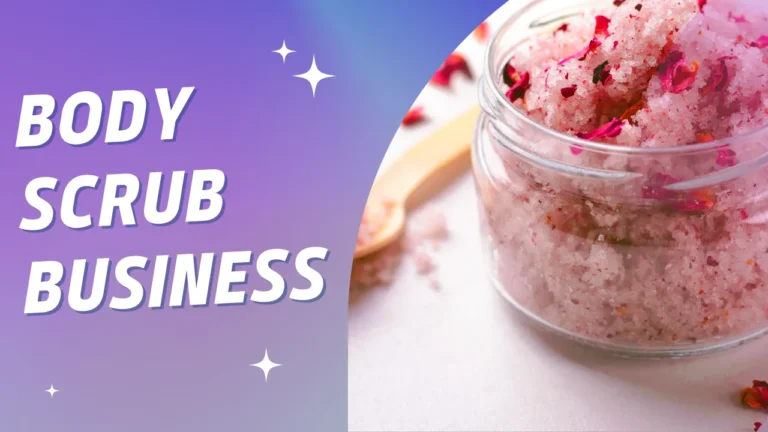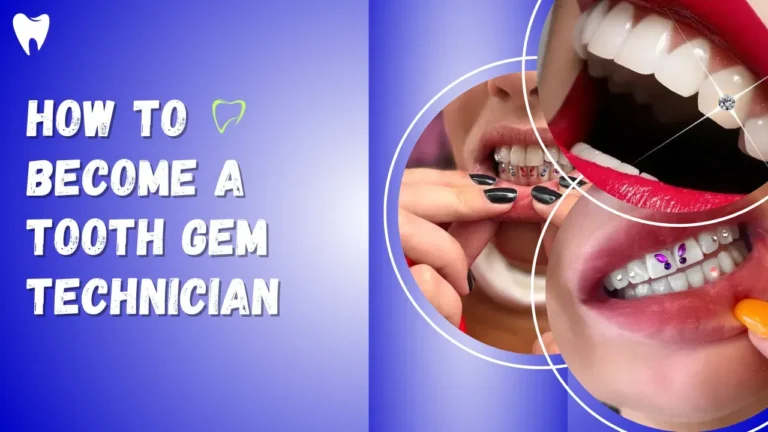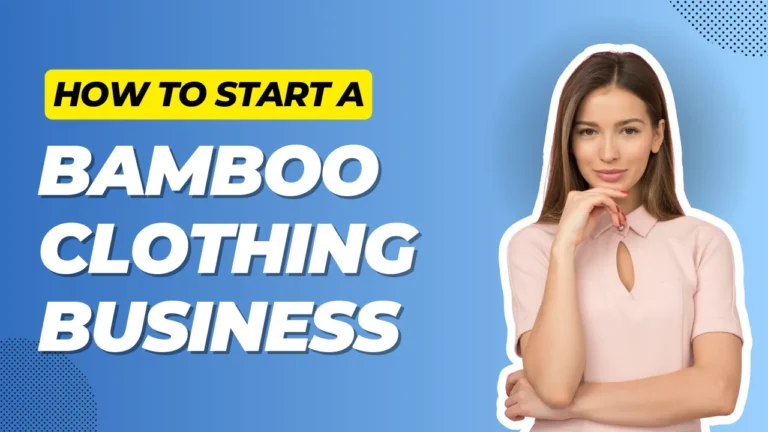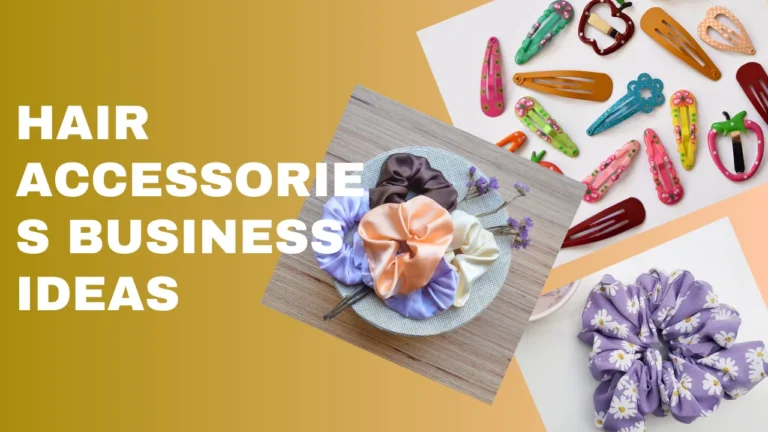Do you want to learn how to start a hair accessories business in 2024 and set it up from scratch to make thousands of dollars per month?
Are you planning to be a successful entrepreneur and establish a business or brand in the hair accessories industry? If yes, then you are in the right place.
The industry is evolving with the trend of fashion and hair accessories products, and many enthusiasts plan to start their ventures.
The global hair accessories market is growing at a CAGR of 7.7% (2021-2028).
The market size was valued at US $18.7 billion in 2021, and the expected value is around US $31.6 billion at the end of 2028. (source: grandviewresearch.com)
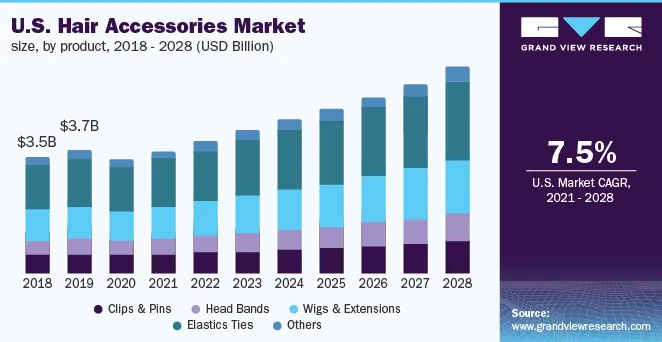
The most selling products in this category are (clips & pins, wigs & extensions, headbands, elastics & ties, etc).
Hair styling is now a new trend in social media; the first thing we found in the high-selling product category on Amazon, “Hair accessories” is one of them.

We know starting a business from scratch is not easy.
For a newbie who does not know the market, setting up the business from scratch to make a profit can be difficult; to succeed requires proper product planning and research.
So, in this free guide, we’ll discuss the steps needed for a beginner and essential to start a business; carefully read and learn the step-by-step process.
Let’s explore the steps.
Before diving into the process, check the pros and cons of starting the business.
Pros
- Low investment require
- High and growing demand
- Good profit margin
- Low competition
- You can sell from home
- Online and offline selling
- Branding opportunity
- Multiple niche or category
- Diverse customer base
Cons
- Competition can be high
- Changing customer preferences
- Marketing and branding
- Inventory management
How to Start a Hair Accessories Business? Steps

1. Select a hair accessories niche
Many new entrepreneurs want to know the best niche to pick and create a store around them. It is also a great idea to focus on one specific niche.
“Hair accessories” is a broad category; many products come in this niche.
So, the question is how to find a profitable niche.
Selecting a profitable niche is not a daunting task.
Here are some key points to guide you through the process.
When you pick a niche, the first step is to research using (Google Trends, online marketplaces, social media, and other tools).
Find some trending products, check the competition, identify the target market, and analyze the demand, price point, and seasonal trend.
Focus on micro-niche and pick only one category.
Because many competitors sell the same product in the same industry, many categories still have high demand and low competition.
You should find this type of product niche to start.
However, if you want to start a small-scale offline physical retail store, then you can select different category, and sell all type of hair accessories, depending on market demand.
You can sell different types of accessories by creating an online or physical store.
Niche selection is the most important step for establishing a brand.
You can specialize only in one category, for example, “headbands,” find the related products that come in this category and list them according to material, size, design, and for different age groups.
And start a profitable product line [online store, production, wholesale, or physical shop].
The smart tip is to analyze the market and your competitors; learn the pricing model, product quality, high-selling products, packaging, etc.
You can find many product categories; here are some examples.
- Hair Band
- Scrunchies
- Hair Clip
- Hair Pin
- Hair comb
- Hair wraps
- HeadBands
Still, these are broad categories; you can find more micro niches around them.
You must pick any product under these categories and start working around it; as you gain experience and understand the market, you can also add new categories.
Focus on market demand, competition, profit margin, and product trend.
Start with a small scale.
Here, you can see a breakdown of some popular hair accessories product categories.
| Category | Products |
|---|---|
| Hairpins and Clips | Bobby Pins, Hair Barrettes, Snap Clips, Alligator Clips, Hair Claws |
| Headbands | Fabric Headbands, Rhinestone Headbands, Sport Headbands, Alice Bands (Traditional Headbands), Turban Headbands |
| Hair Ties and Scrunchies | Elastic Hair Bands, Scrunchies (Velvet, Satin, etc.), Spiral Hair Ties, Ribbon Hair Ties, Scrunchie Headbands |
| Hair Combs and Picks | Wide-Tooth Combs, Fine-Tooth Combs, Hair Picks, Detangling Combs, Decorative Hair Combs |
| Hair Extensions and Wigs | Clip-In Hair Extensions, Halo Extensions, Tape-In Extensions, Synthetic Wigs, Human Hair Wigs |
| Hair Accessories for Braids | Hair Rings and Cuffs, Braid Charms, Hair Wraps, Bobby Pins for Braids, Hair Beads |
| Hair Styling Tools | Hair Rollers, Hair Donuts (for buns), Hairpins for Updos, Hair Twist Makers, Heatless Curling Rods |
| Bridal and Wedding Hair Accessories | Bridal Tiaras, Wedding Hair Vines, Bridal Hair Combs, Veils and Hairpins, Flower Crowns |
| Baby and Children’s Hair Accessories | Baby Headbands, Bow Clips, Kids’ Hair Ties, Character Hair Accessories, Hair Bows |
| Hair Accessories for Men | Hairbands for Men, Hair Pins and Clips for Men, Beard and Mustache Accessories, Hair Nets (for long hair), Durags (for waves) |
| Decorative Hair Accessories | Feathers and Feather Clips, Brooches for Hair, Silk Flowers, Glitter Hair Accessories, Gemstone Hairpins |
| Vintage and Retro Hair Accessories | Vintage Hair Combs, Retro Hair Scarves, Pin-Up Hair Accessories, Fascinators, Antique Hairpins |
| Athletic and Sports Hair Accessories | Sweatbands, Sports Headwraps, Elastic Headbands, Silicone Hair Ties, Athletic Hair Clips |
| Hair Jewelry | Hair Chains, Hair Rings, Hair Cuffs, Hair Piercings, Hair Charms |
| DIY hair accessories | Blank Hairpins and Clips, Hair Accessory Kits, Beads and Embellishments, Fabric and Ribbon Rolls, Glue and Craft Supplies |

2. Define your hair accessory business model
When defining a hair accessories business model, it is important to identify the opportunities, requirements, pros, and cons of this business model.
- Open a retail store.
- Manufacturing business line
- Start the business online.
Open a retail store:
By starting a retail store, you can reach local customers. Find a high-potential area and open a shop around hair accessories. It can be a profitable idea to start the business locally.
The basic steps you can follow:
- Find a potential location.
- Design your storefront
- Organize your accessories
- Find reliable suppliers
- Buy hair accessories in bulk.
- Manage product inventory
- Market the store locally.
- Hire staff and employees.
Connect with reliable suppliers to buy wholesale product inventory; you can connect with manufacturers, wholesalers, or bulk suppliers.
Manufacture hair accessories:
To start a hair accessories manufacturing business, you need raw materials, tools, machinery, staffing, and a good location for a workstation.
Manufacturing is also profitable; you can create custom designs using high-quality raw materials, focusing on market demand, fashion trends, and profitability.
Every type of business model is profitable, and with the pros and cons, you can decide which model suits your resources, goal, and market demand.
Sell Hair accessories online:
To start an online accessories business, you can create your website/store or start with online e-commerce platforms.
Here are some popular places where you can sell your products.
- Amazon or eBay: Best to target a massive audience.
- Etsy: If you want to sell handmade and unique items.
- Shopify: To build your own hair accessories brand, then consider.
- Walmart Marketplace: You can explore a diverse customer base.
- Bonanza: Suitable for lower fees and unique product items.
However, If you want to create your e-commerce store, here are some platforms.
- Shopify
- WooCommerce
- Magento
- BigCommerce
- Wix
- Squarespace
So, let’s discuss how you can set up your store with self-hosted hosting; the process can be the same for creating a store with e-commerce platforms.
Buy a domain name:
Select a name and register a domain with reputable providers like Namecheap or Godaddy, which are known for affordable prices (around $8-$10).
Opt for a .com or country-based top-level domain extension for better visibility.
Purchase web hosting:
Buy a hosting service to store the website files and content and to run the webpage. It is accessible online and is important for storing and managing the website files.
Choose a popular hosting provider such as Bluehost, SiteGround, or HostGator.
Install an E-commerce platform:
Choose an e-commerce platform to install this on your web hosting account.
E-commerce platforms: Shopify, WooCommerce (for WordPress), or Magento.
Install the platforms and then configure the essential settings.
Add product to your store:
After configuration, you can customize your store and add product details.
Take a high-quality picture of your products, then add it to your website, adding proper description pricing, menu, and detailed features.
Create essential pages (about us, privacy policy, terms, contact us, disclaimer, return policy, etc.), and create categories for easier navigation.
Other essential steps:
Integrate payment methods (PayPal, Stripe) and design your store (logo, favicon, fonts, appearance, colors).
Once you complete those steps, optimize the store for Search engines (Google search, Bing search) and Social media to attract organic customers.
You can utilize content, social media, SEO, email, and other paid marketing strategies to promote the store.
3. Conduct proper market research
To successfully launch a Business, the vital part is identifying the target customer and market demand.
You need to find out which customers are potential buyers looking to buy your product and make a purchase when they see your advertisement or any promotion.
Use keyword research tools such as (Semrush or Ahrefs) to find highly searched products.
For example, you can see the global search volume of one single product keyword.
The global search volume of “Scrunchie” is around 3 lakhs. Also, you can find some related keywords (such as – silk scrunchies, hair scrunchies, velvet scrunchies, etc).
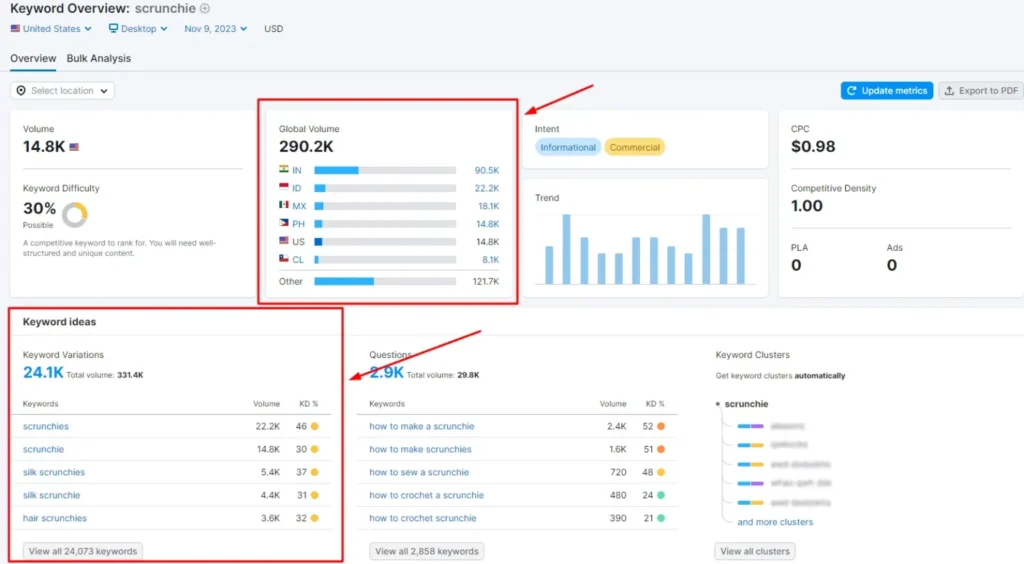
Identifying the target audience and selling the product to them is not difficult.
In the digital marketing and online e-commerce selling trend, it is easy to find target customers online,
Online selling is the proven way to reach more and more customers with less effort.
With the growing demand for online e-commerce, it is easy to sell your product worldwide without making extra effort.
Your target customers can be:
- Women of all ages
- Fashion enthusiasts
- Students and teenagers
- Professional women
- Mothers and children
- Athletes and fitness enthusiasts
- Ethnic and cultural groups
- Hair loss patients
- Pet owners
- Gift shoppers
- Online influencer followers
Focus on one category, research, and find the target market intent.
Conduct demographic research to target a specific age group, gender, and location.
Some other points you can consider when doing your research.
- Research the competition
- Analyze the market trends
- Assess the demand and trend
- Find unique opportunities
In today’s competitive market, You must focus on unique and high-quality products and find ways to differentiate yourself.
You must make products by understanding customer demand and fashion trends.
4. Write a hair accessories business plan
No matter your industry and startup model, a business plan is the most important part of every new business.
You need to create a business plan with proper research.
Include the information on market analysis, target audience, competitive landscape, marketing strategy, financial projections, etc.
Your success depends not only on your business plan but also on your dedication to properly executing the plan while understanding the market, which is essential.
Analyze the competitive landscape and find unique ideas to create products that differentiate your brand.
Focus on unique designs, trending fashion designs, color combinations, high-quality materials, unique features, attractive packaging, and setup at a competitive price.
Create a detailed business plan :
- Executive Summary: Write about your mission statement, target market, and competitive advantage.
- Industry analysis: Analyze the hair accessories industry (market size, growth, past selling data, trends, and challenges).
- Target market: Identify your ideal customers and their needs and demands (Determine age, gender, location, income level, hair type, etc.).
- Products and services: Define what hair products you want to sell (materials, design, style, etc.)
- Marketing plan: Find the best market methods to reach the target audience (content marketing, SEO, local advertising, social media, word-of-mouth, paid marketing, etc.).
- Unique selling proposition: Your USP (unique selling proposition) is essential to compete with the existing market.
- Financial plan: Plan for financing such as funding, sales, profit margins, expenses, running costs, etc.
- Management team: Plan to build a team to manage your business properly.
5. How to make hair accessories to sell
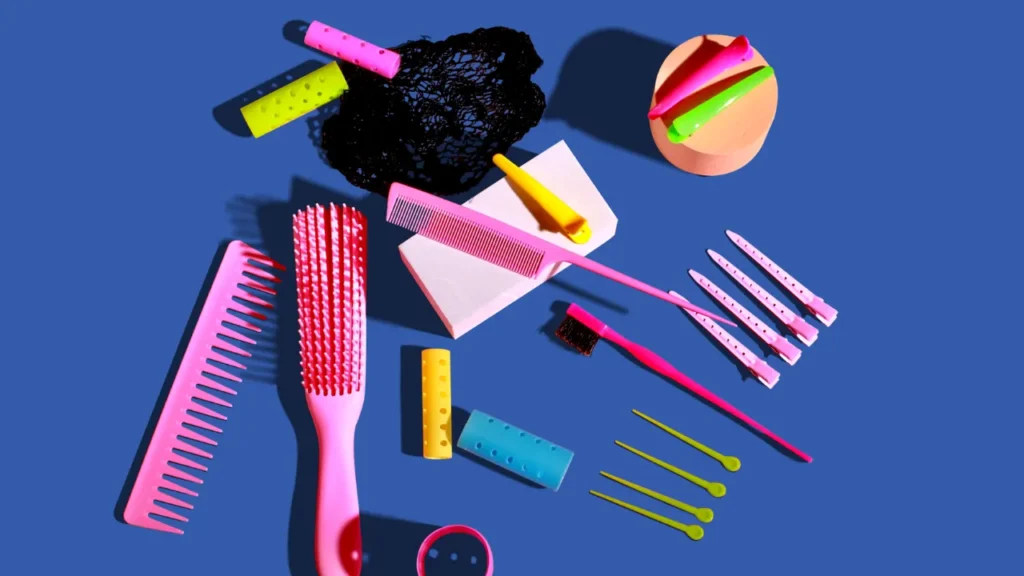
Choose a niche
Before making hair accessories, decide your niche.
We have already discussed the niche selection process; you can choose a niche (scrunchies, headbands, barrettes, clips, and bows).
Gather your material
Once you’ve chosen a niche, gather the essential raw materials for making the products.
For example, to make a scrunchie, you must buy fabric (silk, velvet, cotton), equipment, a sewing machine, ribbon, elastic, and small sewing tools.
Learn the basics
After gathering the supplies, you must learn how to make the accessories.
So first, you have to learn the basic steps to make them; you can learn by watching video tutorials (from YouTube, Instagram, and paid platforms like Skillshare) and reading blogs or books.
Once you’ve mastered the basics, after day-by-day practice, you can refine your skills and experience to create better designs.
Where to buy supplies
Find the right supplier for raw materials, equipment, and basic supplies.
It depends on your location and supplier availability.
The supplier should be reputable and trusted.
Negotiate the best wholesale price to buy raw materials and build a good relationship with them for future expansion.
When you buy material from any supplier, you must analyze its quality and pricing and choose the one capable of supplying the best material at the right time.
To buy supplies, you can consider:
- Fabric stores
- Bead stores
- Craft stores
- Online retailers
- Wholesale suppliers
Online Retailers: Etsy, Amazon, Michael’s, Joann Fabrics, etc.
6. Legal and financial considerations

Also, legal consideration and financial planning are essential for running a business successfully, such as registering the business, obtaining permits & licenses, opening a business bank account, taxation, trademark, etc.
It depends on business size, location, and state or local regulations.
To register the business follow local and state regulations or the registration process, You can also hire a legal agent or attorney for registration and doing legal paperwork.
- Choose a business structure
- Get a business license
- Apply for an EIN
- Sales Tax Permit
- Register your business name
- Comply with product safety regulations
- Protect your intellectual property
- Open a business bank account
- Set up accounting and financial systems
Running a hair accessories business may require specific licenses and permits. Therefore, you must research the requirements and obtain them as required.
Register your business as per the requirements of the state, local, and federal levels rules.
Depending on your business planning, you must choose a suitable business entity (such as sole proprietorship, partnership, LLC, or corporation).
The business structure affects the legal and financial status of a business, as well as its tax obligations. It is also essential for paying taxes and fulfilling other legal requirements.
Open a business bank account.
Open a business bank account for your hair accessories business; it is a smart tip for ensuring the financial success of a venture.
A business bank account will help track your incoming and outgoing funds and provide access to various financial services.
Which is essential for managing and growing a business.
Find the right bank account, then choose the best bank branch, and prepare the proper documentation to create the account.
Types of business bank accounts:
- Business checking account
- Business savings account
- Business certificate of deposit (CD) account
- Merchant account
- Business loan account
Apply for business insurance
As with any business, you must have insurance coverage to protect yourself and your venture from potential risks and liabilities.
Including general liability, property damage, business interruption, workers’ compensation, and product liability coverage.
General liability insurance can protect from property damage and cover damage to the business’s physical property, such as a fire or theft.
For more information, you can read blogs.
7. Branding, designing, and packaging

Branding is the process of creating a unique identity for your business, and design is the process of creating hair accessories that are both stylish and functional.
Create a professional logo, choose a brand name, and create a user-friendly website to promote your product. These are essential resources that can help build your brand.
Focus on branding, design, and attractive packaging to create a unique identity that helps market your products.
Choose a business name.
Choosing a business name is one of the most critical decisions for your company. It is an essential step for your business that represents your brand.
There are many factors to consider when choosing a hair accessories business name.
As your will business grows and progresses, branding will develop with time; the name will be part of your store identity and brand name.
Therefore, when you choose a name for your business, the name should be creative, short, unique, related to your product, attractive, and non-copyrighted.
When choosing a perfect name, you must register a domain name that matches your business name to create a website (for online presence).
Hair accessories business logo
A logo is a visual of your brand name that creates a unique picture in your audience’s brain, so create an attractive, catchy, meaningful, easy, and colorful logo for your brand.
Creating a logo is not difficult; you can create a professional logo by investing $5-$10, and you can hire a logo designer from freelancing sites like (Fiverr and Upwork).
8. Promote your hair accessories products
Promoting your hair accessories products requires a strategic approach with a good understanding of your target customer.
The best way to promote your hair accessories line is through social media marketing (Facebook, YouTube, Pinterest, Reddit, Linkedin, Instagram and other platforms).
First, you need to set up an account on Facebook and Instagram. You should regularly post about your products and services to attract more customers.
Collaborate with beauty and fashion industry influencers to reach a wider audience.
Some other ideas to promote your business:
- Build your strong online presence
- Use an influencer marketing strategy
- Run paid advertising campaigns
- Offer discounts and promotions.
- Email marketing promotional method
- Create a website for an online presence
Follow those marketing strategies to promote your product; you can conduct additional research to find other effective marketing methods appropriate for the products.
Hopefully, those ideas and steps are helpful.
Frequently Asked Questions (FAQs)
Is selling hair accessories profitable?
Yes, starting a hair accessories business is profitable and a growing opportunity; choose the right product and launch with the right marketing strategy. You can start with retail, wholesale, manufacturing, or online.
Are hair accessories in demand?
Yes, there is a lot of demand for hair accessories, the most demanding accessories such as (scrunchies, headbands, hair clips, hairpins, combs, etc).
How do you start a hair accessories business in India?
To start a hair accessories business in India, the steps you need to take are conducting market research, planning, choosing the right product, setting up your store, preparing product inventory, setting up both online and offline stores, promoting through social media or online advertising, etc.
What hair accessories are in style for 2023?
In 2023, the style of hair accessories is (Claw clips, Beaded hair accessories, Headbands, Scrunchies, Hair Scarfs, Hair Jewelry, Coral hair accessories, etc.
What are the benefits of a hair accessory business?
Benefits of starting a hair accessory business: Low startup cost, high profit margin, low competition, growing opportunity, diverse product options, niche-based business, and you can work by setting up your hours.
How to start a hair accessory business online?
To start a hair accessory business online, you need to set up an online store on an E-commerce platform (Amazon, Etsy, and Shopify), as well as you can also create your website to sell hair products.
1. Setup online store
2. Setup a pricing
3. Listing the product
4. Promotion and marketing
5. Product packaging and delivery to your customer
How much does it cost to start a hair accessories business?
There are several things to consider before calculating the start-up cost. It is difficult to calculate the accurate cost for an accessories business; the start-up cost depends on multiple factors.
Calculate the start cost by analyzing the points:
Inventory, raw materials, machinery, workspace, legal needs, insurance, workforce, packaging, design and delivery cost, website setup, and marketing.
However, you may need at least $3,000-$5,000 to start from a small scale.
Final Thought
Starting a hair accessories business allows you to sell different types of products with different designs; we have included all the essential steps in this blog post.
You can sell hair accessories online and offline. Learn and start your successful venture.
Successful entrepreneurs require proper research, planning, dedication, hard work, patience, learning, and consistency.
Hope the blog post is helpful; if you have any other doubts, you can comment.
You may also like:
